
Lawn Watering: How Much Should You Water?
Everyone knows lawns need to be watered, but it’s quite tricky figuring out how much.
Too much water can lead to countless problems, you lawn can can literally rot, you can attract all kind of unwanted pests, weeds and even diseases.
So the question becomes how much should you water your lawn?
On average it’s recommended to infrequently water the lawn so it’s root systems expand and seek out more moisture, this in turn will enable it to store more water, keep the ground nice and firm, prevent weeds from out competing your grass for nutrient and overall keep your lawn healthy.
But that are just average recommendations, if you truly want good lawn you need to consider the details.
In this article we’ll go more in depth on how much each type of grass need and how to adjust for seasons, soil quality and other factors that might effect watering your lawn.
Chart Showing Watering Requirements for Different Lawns
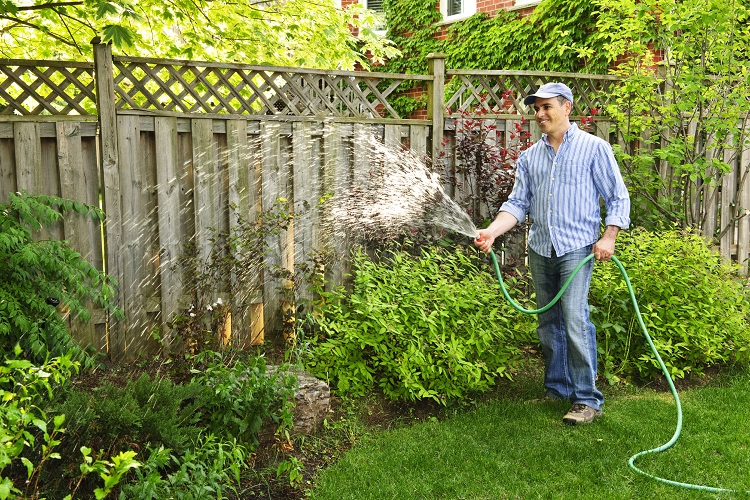
Here is a summary of the approximate water requirement of some popular lawn types:
| Type of Lawn | For Green Turf | For Dormant Turf |
| Bermuda | 0.5 inches of water per week | 0.2 inches of water per week |
| Buffalograss | 0.3 inches of water per week | 0.2 inches of water per week |
| Kentucky bluegrass | 1.2 inches of water per week | 0.7 inches of water per week |
| Perennial ryegrass | 1.5 inches of water per week | 1.0 inches of water per week |
| Tall fescue | 0.8 inches of water per week | 0.5 inches of water per week |
| Zoysia | 0.5 inches of water per week | 0.2 inches of water per week |
Note that the water requirement for green turf will keep your lawn green and growing. On the flip side, sticking to the lower water volume will keep your lawn alive, but it may turn brown.
Determining Soil Quality
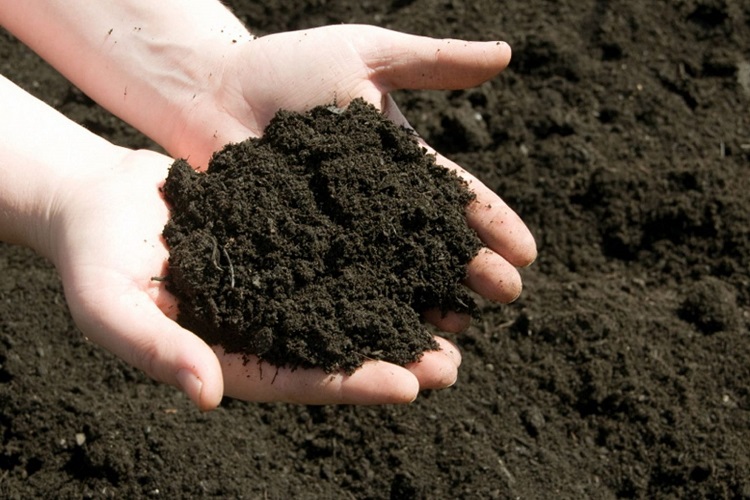
Just before you turn on your sprinkler, there’s one other factor to consider. What type of soil do you have?
If you don’t know the type of soil underneath your lawn, you might risk creating puddles and runoffs.
In some cases, your grass will lack enough water even if you follow the suggested weekly water requirements.
Soil types include clay, sand, and loam. Each of these has different water retention properties that determine the amount of water your lawn will need.
Clay soil
Typically, clay soil absorbs water slower than all the other soil types. And it dries out slowly, too.
Since it has comparatively higher water retention, you have to water it less often.
Keep in mind that watering less often doesn’t mean watering over a short period. Instead, water must be applied to clay soil over a longer period but at a lower rate.
That’s because the water seeps into the soil at a slower rate.
With Clay soils one needs to be careful no to over water.
If you just can’t get the hang of it using gypsum and other soil amendments can help you get a different lawn type
Sandy soil
This is the opposite of clay soil as it retains less water and drains rather quickly.
People often sand their soils to correct drainage problems.
This means sandy soil will require more frequent watering compared to clay soil. Thankfully, it usually takes less water and less watering time to properly wet the soil.
Loam soil
This soil type has water-retention ability between clay and sandy soil. It requires a moderate amount of water to wet the soil, and it holds water for a reasonable amount of time.
Now you can see why it is important to know the type of soil on your lawn. Maintaining the same watering schedule for sandy and clay soil types will do your grass no good.
Armed with this knowledge, you can adjust your sprinkler system to deliver the right water application rates. Also, you can adapt the right watering frequency depending on your soil type.
Watering Your Lawn Based on Geographical Location

Factor in any district restrictions on outdoor water usage or irrigation that applies to your state or community.
Water management restrictions are put in place to save water and usually vary by time of year. So, you want to familiarize yourself with what applies to where you live.
Also, you may not need to strictly follow your watering schedule if there is significant rainfall just before the day you are scheduled to irrigate.
It is also crucial to choose the right lawn type for your region. This will help you to cut down your water bill.
For example, the centipede grass is not the best pick for extremely dry regions. If you live in a dry place and choose to grow the grass on your lawn, you will need a lot of water to keep centipede grass happy.
That’s because the grass variety needs to be watered often and consistently if it must survive in dry regions. As expected, the result of frequent watering is usually an increase in your water bill.
That’s beside the extra strain you’ll put on your sprinkler system, which can lead to wear and tear, and of course, more money on replacement parts.
You can sidestep all of these hassles if you choose the right grass that suits your region.
Lawn Watering Based on Weather

When it comes to watering your lawn, here’s one thing you should never forget: watering schedules are not set in stone!
Weather conditions can affect your irrigation frequency. You must consider the temperature, humidity level, wind, and other environmental conditions when deciding the water requirement for your lawn.
When the weather is less windy, cool, humid, your lawn will need less water, regardless of the soil type and grass variety.
On the other hand, high winds, low humidity, and high temperatures mean that water will evaporate quickly from the soil. These weather conditions call for watering more often.
Another weather condition you want to take into account when watering is the amount of rainfall.
As mentioned earlier, you don’t have to stick to your watering schedule or turn your sprinkler to full blast if there is recent rainfall.
Keep in mind that you don’t want to water and feed your lawn based solely on a schedule. A better approach is to water and feed your lawn based on specific needs.
For more information, check out our guide on the Best Time To Water Lawn In Hot Weather.
Watering Your Lawn
What Time of Day to Water Your Lawn?
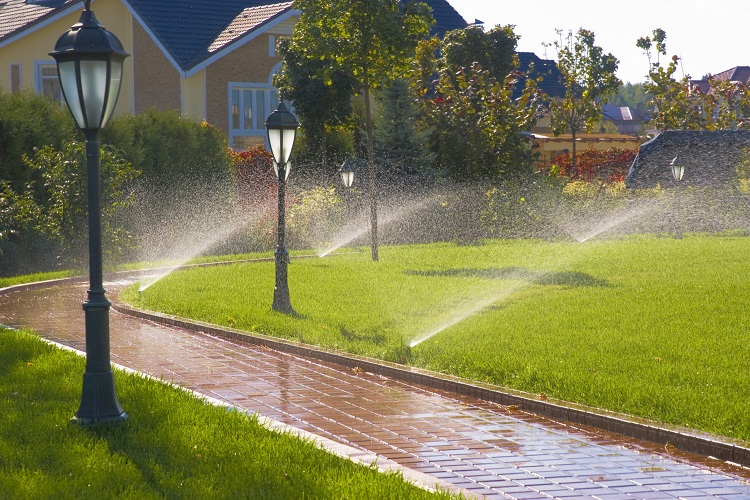
The best time of the day for lawn irrigation is during the coolest periods of the day. Typically, this is in the early hours of the morning.
The temperatures are lower, the winds are light, and the ground is still covered in dew in the early morning hours. That means you won’t be wasting water due to excessive evaporation.
It also means that the water can get to the roots of your grass better.
Schedule your lawn watering to around early morning until 8am. If that’s not feasible for you, try to make time for watering before 10am.
Watering your lawn early in the day gives the grass enough time to dry before the sun goes down.
Just because the evening hours are also cooler doesn’t necessarily make that period a good time for watering your lawn.
The grass will likely remain wet throughout the night if you water it in the evening. Also, watering in the evening can cause puddles and waterlogged spots since there is no sunlight to dry it.
That’s not the type of condition that you want for your lawn as it exposes the grass to fungal infections and other pathogens that can weaken your grass.
How Much Water to Use?
Most lawns require about 1 to 1.5 inches of water every week to stay healthy. However, it is crucial to factor in the type of grass and soil.
To be on the safer side, aim to wet your soil to a depth of about 6 – 8 inches.
Healthy grass systems can go that deep into the ground, so you’ll need to ensure that the soil is thoroughly wet for the roots to access the water.
Is It Better to Water in Batches or All At Once?

The ideal watering schedule for most lawns is once or twice per week. This may change to every three days if you have sandy soil.
Here’s the thing though. You want to avoid overwatering because it is one of the most detrimental mistakes you can make with your lawn.
If applying water all at once will cause runoffs or puddles, it is better to divide it into two watering per week.
Watering less frequently but for longer periods of about 25 to 30 minutes will produce deep roots. This can help your lawn withstand drought.
On the flip side, watering frequently but for shorter periods can lead to pest infestation and diseases. Plus, you’ll be wasting water and spending more money.
Whatever you do, do not water your lawn every day unless you are watering newly planted grass seeds.
How Can You Tell If Your Lawn Gets Enough Water?
Here are a few different ways to know if your lawn is getting enough water.
- If the grass looks vibrant, you are probably doing the right thing.
- Grab a screwdriver and stick it into the soil. If it goes down to about 6 inches or more, your lawn is receiving enough water. If not, you need to up your watering routine.
- Use a soil moisture meter to check the soil. The tool is relatively inexpensive but more reliable than sticking a screwdriver into the soil.
Lawn Watering Equipment
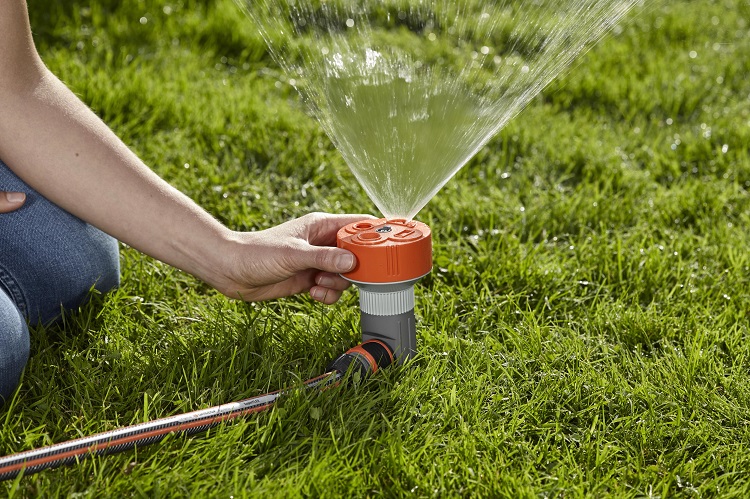
There are several types of irrigation systems and pieces of watering equipment. The ones you choose will depend on the size of your lawn and personal preference.
- Automatic Irrigation Systems: These systems monitor the soil moisture content continuously. When the moisture level drops below a certain level, the system automatically activates and irrigates the lawn.
- Smart Sprinkler Systems: These smart devices can automatically adjust the amount of water delivered to your lawn or yard based on weather forecasts.
- Drip Watering Systems: These are better suited for ground covers and landscape beds. They are also a great choice if you have other plants alongside your lawn. They feature small emitters (holes along the pipes) that deliver water directly to the roots of plants.
- Pumps: There are several watering pump options to choose from, including centrifugal, booster, self-priming, and submersible pumps.
Watering pumps are a great choice if you have access to ponds, streams, or other types of surface water. You can use pumps to supply water to their lawn sprinkler system and save lots of money on using municipal water sources. - Hoses: Soaker hoses are best suited for vegetable gardens and flower beds. But they can also work for smaller lawns. They use a lot less water and their watering action promotes vertical root growth.
- Nozzles/Sprayers: Watering spray nozzles are attached to hoses or any other water source. In addition to allowing you to easily regular the water range, spray pressure, and patter, the spray nozzles also allow you to turn the water on and off without using the main faucet.
- Sprinklers: Choosing a sprinkler head depends on the size of your lawn and the number of hydro zones. You can choose from fixed sprays, rotors, bubbler sprinkler heads, and more. Learn more about sprinklers here.
Watering Equipment Maintenance
Irrigation systems are available as underground and above-ground systems. Whatever option you choose, the system must be functioning properly and efficiently.
This can only be possible with regular maintenance.
Although automatic irrigation systems can last up to 20 years or more, the different parts will need regular maintenance to perform optimally. You may even need to replace some parts from time to time.
Can Your Watering System Freeze in Winter?
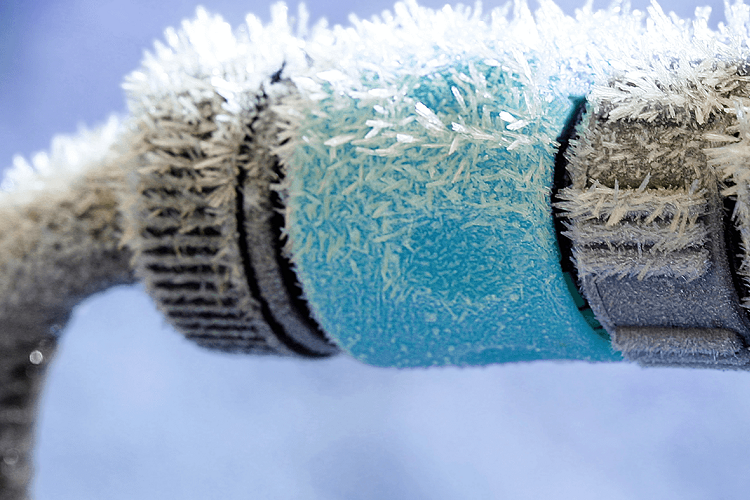
Watering or irrigation systems can freeze and even crack if not prepared for the colder months.
Leaving water in the pipes throughout winter can cause the water to freeze as temperatures drop below freezing.
Temperatures below 32oF can freeze up your sprinkler system. Frozen water can cause cracks in the fittings or pipes.
To avoid this, ensure that the watering system is properly winterized.
What Should You Do If Your Watering System is Clogged?
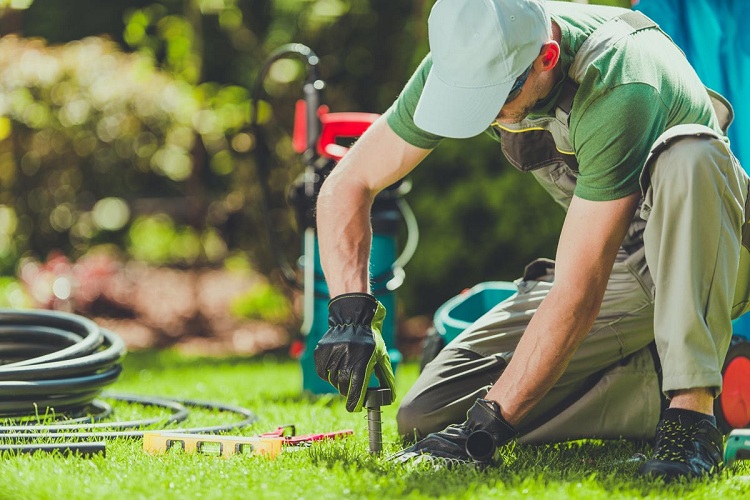
If there is no water or your sprinkler head isn’t rising, you may have a clogged sprinkler head. This is a normal occurrence caused by a buildup of sand, dirt, and other debris in the filters.
Thankfully, fixing a clogged sprinkler head is pretty straightforward. All you have to do is clean the filter.
To do this:
- Turn off your water supply
- Life the pop up rise
- Remove the nozzle and the filter
- Clean the filter
- Return the nozzle and filter
Conclusion
Lawn watering doesn’t have to be a hit-or-miss proposition if you know how to go about it. Thankfully, you’ve read our detailed guide on the best watering approach.
To the first-timer, all of this information might feel a bit overwhelming, and understandably so.
That’s why at GreenIQ., we go a step further to help clients choose the best grass types that suit their region. Plus, we offer expert advice on lawn care services so you don’t have to depend on guesswork.
Do not hesitate to contact us if you need help with your lawn in any way.
Resources:
